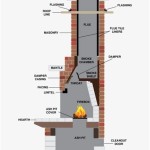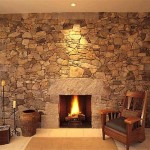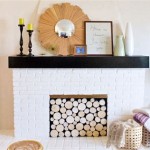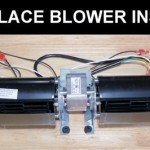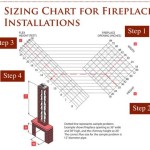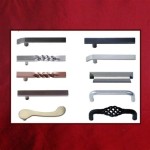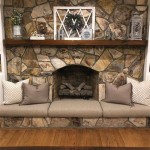What Is a Direct Vent Fireplace?
A direct vent fireplace is a type of sealed fireplace system that draws combustion air from outside the home and vents exhaust gases directly outdoors through a sealed venting system. This design distinguishes it from traditional fireplaces and other vent-free models, offering enhanced safety, efficiency, and indoor air quality.
Direct vent fireplaces have gained significant popularity in recent years due to their numerous advantages over conventional wood-burning fireplaces and older gas fireplace technologies. Understanding the principles of their operation and the benefits they offer is crucial for homeowners considering a fireplace installation or upgrade.
The key components of a direct vent fireplace system typically include the firebox, a glass front, the venting system, and a gas valve and burner assembly. The firebox is the enclosed area where the fire is contained, and the glass front ensures that no indoor air is used for combustion. The venting system consists of two concentric pipes (one inside the other): one pipe draws combustion air from outside, and the other expels exhaust gases. The gas valve regulates the flow of gas to the burner, which creates the flames. Some models also include features such as remote controls, blowers, and decorative options.
Key Point 1: Operation and Venting System
The defining characteristic of a direct vent fireplace is its closed combustion system. Unlike traditional fireplaces that draw air from inside the room to fuel the fire, a direct vent fireplace utilizes a dual-pipe venting system. This system consists of two concentric pipes: an inner pipe and an outer pipe. The outer pipe draws fresh air from outside the home to support combustion within the firebox. At the same time, the inner pipe vents exhaust gases, including carbon monoxide and other combustion byproducts, directly back outside.
This closed-loop system ensures that the combustion process is entirely isolated from the living space. No indoor air is used for combustion, and no exhaust gases are released into the home. This dramatically improves indoor air quality compared to traditional fireplaces, which can release smoke, soot, and carbon monoxide into the room. The venting system can be installed horizontally through an exterior wall or vertically through the roof, offering flexibility in placement and installation.
The sealed nature of the direct vent system also prevents drafts and heat loss. Because the fireplace is not drawing air from the room, it doesn't create negative pressure within the house, which can lead to cold drafts and increased energy bills. This contributes to improved overall energy efficiency.
Key Point 2: Safety and Indoor Air Quality
Direct vent fireplaces offer a significant advantage in terms of safety compared to traditional fireplaces and vent-free gas fireplaces. Because the combustion process is sealed off from the living space, the risk of carbon monoxide poisoning is greatly reduced. Carbon monoxide is a colorless, odorless gas produced during incomplete combustion, and it can be deadly if inhaled in high concentrations.
Traditional fireplaces often lead to incomplete combustion, particularly if the chimney is not properly maintained or if the wood is not fully seasoned. This can result in the release of carbon monoxide into the home. Vent-free gas fireplaces, while designed to burn cleanly, can still release small amounts of carbon monoxide and other pollutants into the air. Direct vent fireplaces, however, virtually eliminate this risk by venting all exhaust gases directly outside.
Furthermore, the sealed glass front of a direct vent fireplace prevents sparks and embers from escaping into the room, reducing the risk of fire hazards. This feature is particularly important for homes with children or pets. The glass front also stays relatively cool to the touch, further enhancing safety.
Key Point 3: Efficiency and Heating Performance
Direct vent fireplaces are known for their efficiency in converting fuel into heat. Because they don't draw air from the room, they don't lose heat up the chimney like traditional fireplaces. This results in a more efficient heating performance and lower energy bills. The sealed combustion system also helps to maintain a consistent temperature in the room, which eliminates drafts and cold spots.
The efficiency of a direct vent fireplace is often expressed as its AFUE (Annual Fuel Utilization Efficiency) rating. This rating indicates the percentage of fuel that is converted into usable heat. Direct vent fireplaces typically have AFUE ratings of 70% to 85% or higher, which is significantly higher than traditional wood-burning fireplaces, which may have AFUE ratings as low as 10% to 20%. This increased efficiency translates into lower fuel consumption and lower heating costs.
The heating capacity of a direct vent fireplace is typically measured in British thermal units (BTUs). The BTU rating indicates the amount of heat that the fireplace can produce per hour. Direct vent fireplaces are available in a wide range of BTU ratings, allowing homeowners to choose a model that is appropriate for the size of their room and their heating needs. Some models also feature variable heat settings, which allow users to adjust the heat output as needed.
Moreover, some direct vent fireplace models are equipped with blowers that circulate warm air throughout the room, providing more even heat distribution. These blowers can be particularly useful in larger rooms or in homes with poor insulation.
Understanding How Direct Vent Works Heat Glo

What Is A Direct Vent Fireplace Fireplaces Learning Center
.aspx?strip=all)
Benefits Of Direct Vent Fireplaces Regency Fireplace S

Benefits Of Direct Vent Fireplaces

Direct Vent Vs Natural Www Mygasfireplacerepair Com

What Is A Direct Vent Fireplace Fireplaces Learning Center
.aspx?strip=all)
Benefits Of Direct Vent Fireplaces Regency Fireplace S

Vented Vs B Vent Direct Free Dixie S

Gas Fireplaces Direct Vent Vs Free Fine Homebuilding

What Is A Direct Vent Fireplace Fireplaces Learning Center


